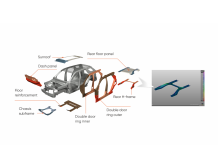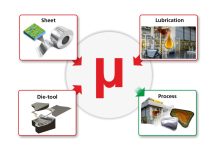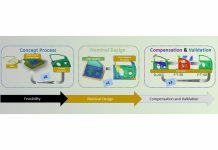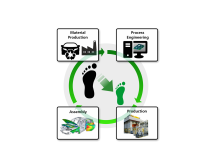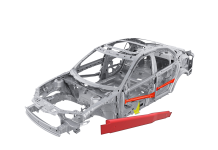This blog post brings something new to FormingWorld.com concerning “Accuracy in the Stamping Process Chain.” On May 20, 2020, Dr. Intaek Lee from AutoForm Japan presented a global webinar, which unveiled the Accuracy Footprint model to the public. The Accuracy Footprint is not only a methodology used by AutoForm experts to assess the accuracy of sheet metal forming simulations, but also – even more importantly – an easy-to-use process for simulation users to ensure consistently high quality of their simulation models. In other words, it’s a systematic approach to achieve highly accurate simulation results in sheet metal forming.
As part of our ongoing series on accuracy, you can now watch the webinar video, which focuses on three main points:
- What are the requirements for accuracy evaluation?
- How can you increase your accuracy?
- What needs to be kept in mind to achieve highly accurate stampings?
To start out with, it’s important to understand that comparing one stamped part to one simulation result falls short of achieving meaningful accuracy assessments. This fundamental fact has been recognized and published by many renowned engineering associations, among others, for example, by the American Society of Mechanical Engineers (ASME). In the video, Dr. Intaek Lee explains why comparing clusters of data points is a necessary prerequisite for assessing and achieving true accuracy.
Using interesting graphs Dr. Lee explains some fundamental concepts regarding how to judge and how to achieve true accuracy. In a nutshell, accuracy is the difference between a set of reference data (e.g. simulation results) and measurements of the actual panel (from tryout or production). His argument is that by comparing one single measurement with one single simulation result does not allow any meaningful conclusions regarding the accuracy of either data and can – in fact – lead to incorrect conclusions.
Accuracy may be assessed and achieved using methods from statistical process control. Of course, such methods are being used extensively to track the performance of industrial production processes such as stamping operations.
Since the purpose of all planning and engineering activities (including stamping simulation) is to ensure efficient and productive production processes, of course, the same methodologies need to be used in engineering also in order to meaningfully support tryout and stamping operations.
To learn more about this new approach, contact Intaek Lee on LinkedIn.
See the full video here:
*Background cover background: courtesy Volvo Body Components.



